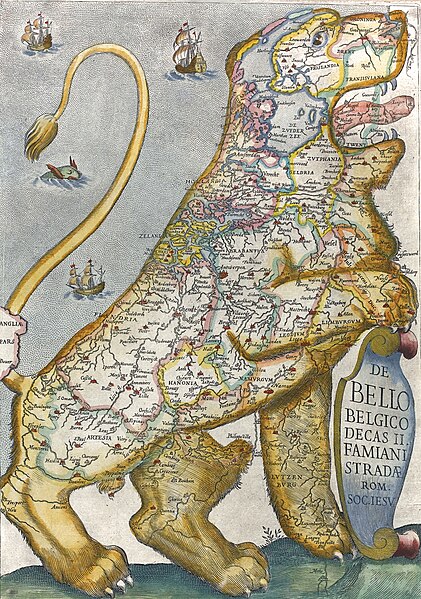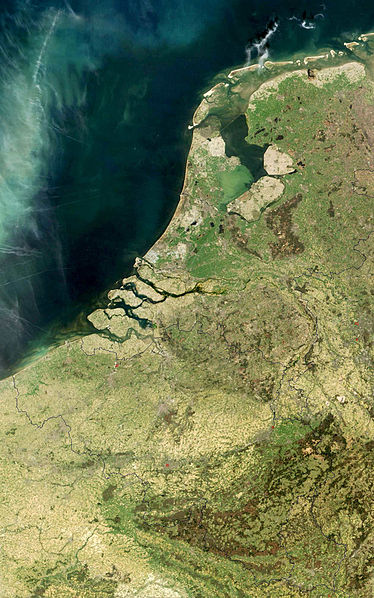Terminology of the Low Countries
The Low Countries comprise the coastal Rhine–Meuse–Scheldt delta region in Western Europe, whose definition usually includes the modern countries of Luxembourg, Belgium and the Netherlands. Both Belgium and the Netherlands derived their names from earlier names for the region, due to nether meaning "low" and Belgica being the Latinized name for all the Low Countries, a nomenclature that became obsolete after Belgium's secession in 1830.
The Low Countries indicated in Latin as Belgico (1647)
On the title page of Descrittione (1581), an account of the history and the arts of the Low Countries, no less than three names are used to indicate the Low Countries: 1) Belgia (alongside the woman figure on the left), 2) i Paesi Bassi and 3) Germania inferiore (both to the right)
Under Philip the Good (1396–1467), Duke of Burgundy, the provinces of the Netherlands began to grow together: Flanders, Artois, Namur, Holland, Zeeland, Hainaut, Brabant, Limburg and Luxembourg were ruled in personal union. He has been honored by later humanists as the founding father of the Netherlands. (Portrait by Early Netherlandish painter Rogier van der Weyden, c. 1450).
The Latin title Index Batavicus is translated in the subtitle (not shown) as Naamrol van de Batavise en Hollandse schrijvers ("Index of Batavian and Dutch writers"). The Dutch Virgin sits on the Dutch lion. Left in the background a bookcase bearing the coats of arms of the Dutch Republic (1701).
The European region known as the Low Countries, historically also known as the Netherlands or Belgica, is a coastal lowland region in Northwestern Europe forming the lower basin of the Rhine–Meuse–Scheldt delta and consisting today of the three modern "Benelux" countries: Belgium, Luxembourg, and the Netherlands – which English and French give the same name as the traditional regional name. Geographically and historically, the area also includes parts of France and Germany such as French Flanders and the German regions of East Frisia and Cleves. During the Middle Ages, the Low Countries were divided into numerous semi-independent principalities.
The Low Countries as seen from space
Jan van Eyck, The Arnolfini Portrait, 1434, National Gallery, London
Sack of Maastricht by the Tercios de Flandes (Flemish Regiments) in 1579
Siege and capture of Tournai (1581)








